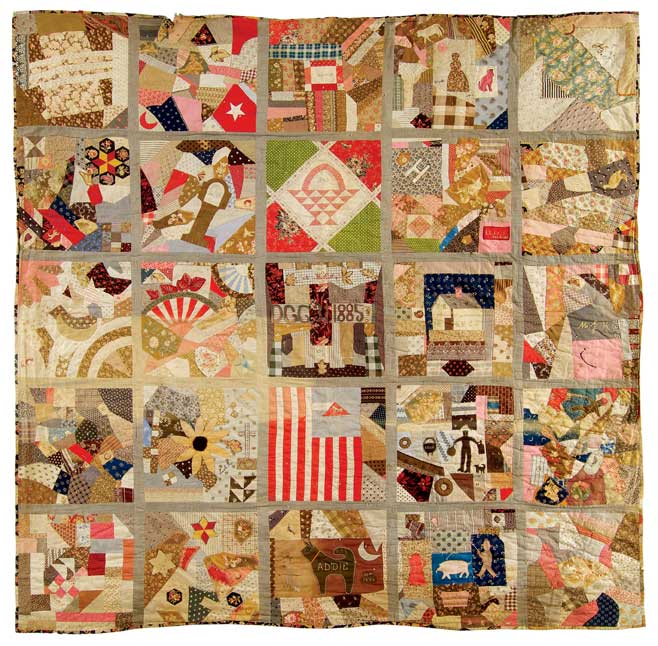New England Quilt Museum in Lowell, MA
On a cobblestone corner in downtown Lowell, Massachusetts, volunteers are decoding the genealogy of the Bay State one quilted panel at a time. Once a month, the Massachusetts Quilt Documentation (MassQuilts) Project invites people from around the Commonwealth to drag their grandmothers’ quilts out of those old steamer trunks. They can bring them by the […]

Several makers contributed to <i>Country Scenes</i>, a foundation-pieced and appliques cotton crazy quilt, created in South Royalston, Massachusetts, around 1885.
Photo Credit: Stansbury, David
Photo Credit : Stansbury, David
On a cobblestone corner in downtown Lowell, Massachusetts, volunteers are decoding the genealogy of the Bay State one quilted panel at a time. Once a month, the Massachusetts Quilt Documentation (MassQuilts) Project invites people from around the Commonwealth to drag their grandmothers’ quilts out of those old steamer trunks.
They can bring them by the New England Quilt Museum for a thorough examination. Vivien Lee Sayre, the project’s founder, says that most people who come are hoping to shed some light on their family histories. Without hard documentation, MassQuilts volunteers can only infer certain aspects of the makers’ lives, but their interpretations may at least set family investigators on the right path.Quilts are as much about communication as comfort, and the symbols and inscriptions blended into a design say a lot about a maker’s personal or political life. With a sharp eye and a reference library’s worth of books, Sayre and her team can pinpoint clues that suggest things such as whether the maker was starting a family, or advocating for temperance, or even which side she supported in the vicious gold-versus-silver standard debate of the 1890s.
One quilt with particularly dark symbolism stands out in Sayre’s mind: Rats, a bloody knife, lilies with a black rose … the quilt was covered in images that evoked death. The owner wasn’t too surprised by the findings. The quilt had been a gift to a male ancestor from his ex-girlfriend on the occasion of his wedding.
A selection of the most interesting quilts documented by the project are on display at the New England Quilt Museum through September 20 in an exhibit called Massachusetts: Our Common Wealth. Choosing which to show and which to hold back couldn’t have been easy. When asked what makes a quilt important, Sayre fires back, “They all are, because they all have a family, and each family is different.”
MassQuilts documentation is available on the third Friday of every month; reservations required. The project has also produced a companion book, Massachusetts Quilts: Our Common Wealth (University Press of New England; $60). For information, contact: 781-834-1261; massquilts.org
New England Quilt Museum, 18 Shattuck Street, Lowell, MA 978-452-4207; nequiltmuseum.org







